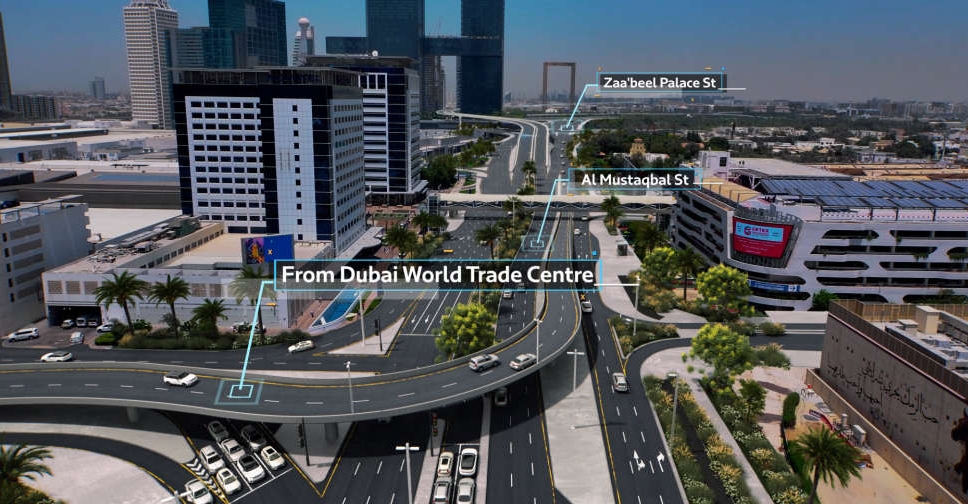Dubai's Infrastructure Renaissance: A Closer Look at the AED 633 Million Upgrade of Al Mustaqbal Street
In a significant step towards enhancing urban mobility and infrastructural robustness in Dubai, the Roads and Transport Authority (RTA) has recently allocated a substantial AED 633 million for the redevelopment project of Al Mustaqbal Street. This ambitious initiative, which extends from its intersection with Za’abeel Palace Street to Financial Centre Street, is part of a broader endeavor aimed at improving connectivity in one of the city’s most crucial commercial corridors.
The Al Mustaqbal Street Development Project is not merely an upgrade; it represents a critical component of Dubai’s ongoing urban transformation. Over the years, the emirate has positioned itself as a global hub for business and tourism, necessitating a sustainable and efficient transport network. As noted by Mattar Al Tayer, Director General and Chairman of the Board of Executive Directors at RTA, “The project will serve several key commercial, residential, and development zones, most notably the Dubai World Trade Centre. It will also serve Dubai International Financial Centre (DIFC) and further enhance connectivity to key areas, including Za’abeel, Downtown Dubai, and Business Bay, benefiting approximately half a million residents and visitors.”
Set to increase the corridor’s capacity by an impressive 33%, the redevelopment will allow for the movement of up to 8,800 vehicles per hour in both directions, a significant rise from the current capacity of 6,600 vehicles. Furthermore, travel times on this vital route will be dramatically cut from 13 minutes to just 6 minutes, underscoring the emphasis on efficiency and speed of transport.
The project encompasses the construction of three major tunnels totaling 1,200 metres at the intersection of Al Mustaqbal Street and Trade Centre Street. The first tunnel, a three-lane conduit moving towards Deira, will accommodate a staggering 4,500 vehicles per hour. Meanwhile, a two-lane tunnel facilitating bi-directional traffic between Deira and Jebel Ali will possess a combined capacity of 3,000 vehicles, and an additional single-lane tunnel dedicated to the burgeoning One Central development will allow for 1,500 vehicles per hour.
Moreover, a 450-metre bridge is expected to enhance the flow of traffic from the Dubai World Trade Centre towards Za’abeel Palace Street, while the broader widening of Al Mustaqbal Street over a span of 3,500 metres from the Financial Centre Street intersection to Za’abeel Palace will increase its capacity from three to four lanes, streamlining traffic flow amid the bustling urban landscape.
In addition to vehicular enhancements, the project is also forward-thinking in terms of urban planning. It aims to improve pedestrian safety and accessibility with an array of new features, including upgraded pedestrian walkways, dedicated cycling tracks, and aesthetic enhancements like decorative lighting. The integration of free-flowing ramps will facilitate uncomplicated traffic movement at the intersections of Al Mustaqbal Street with Exhibition Street and Trade Centre Street, ensuring a seamless transition for motorists.
Moreover, significant emphasis has been placed on creating urban spaces that foster community engagement. As cities increasingly strive to become not just functional but also inclusive and livable, the Al Mustaqbal redevelopment project takes a holistic approach to urban design—supporting vibrant, integrated urban living that encourages interaction among residents and visitors alike.
The initiative also enhances connectivity with the nearby metro stations, promoting a seamless, multi-modal transportation experience for both residents and the influx of tourists that Dubai consistently attracts. By linking major developments and transport nodes, the project lays the groundwork for a more interconnected urban ecosystem.
As Dubai continues its ascent on the global stage, projects like the Al Mustaqbal Street redevelopment reflect the city’s commitment to ambitious infrastructural growth, sustainability, and enhanced quality of life. This undertaking is emblematic of how urban centers can adapt to the ever-evolving demands of modern living while preserving their unique cultural identities.
In conclusion, the Al Mustaqbal Street Development Project is not just a road upgrade; it is a pivotal infrastructure investment designed to transform the urban landscape of Dubai, resonating with the emirate’s vision to become a leading global city where mobility, commerce, and community thrive together.
Tags: #UAE #BusinessNews #EconomyNews #RealEstateNews

